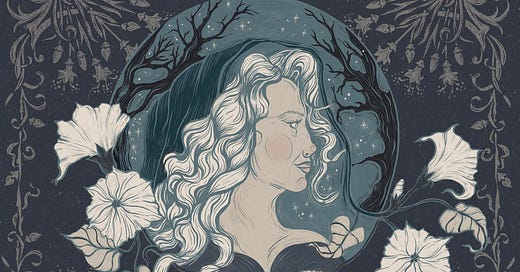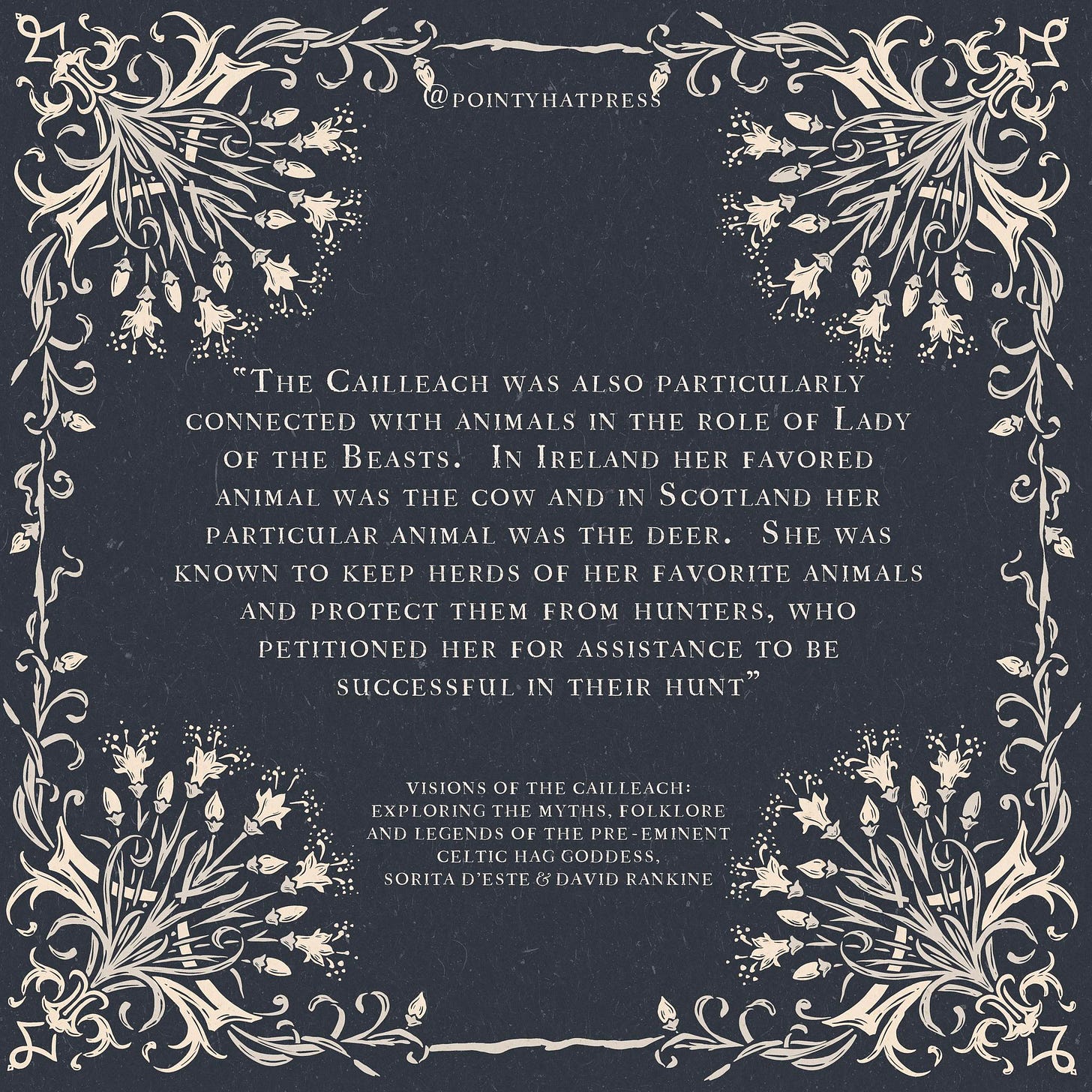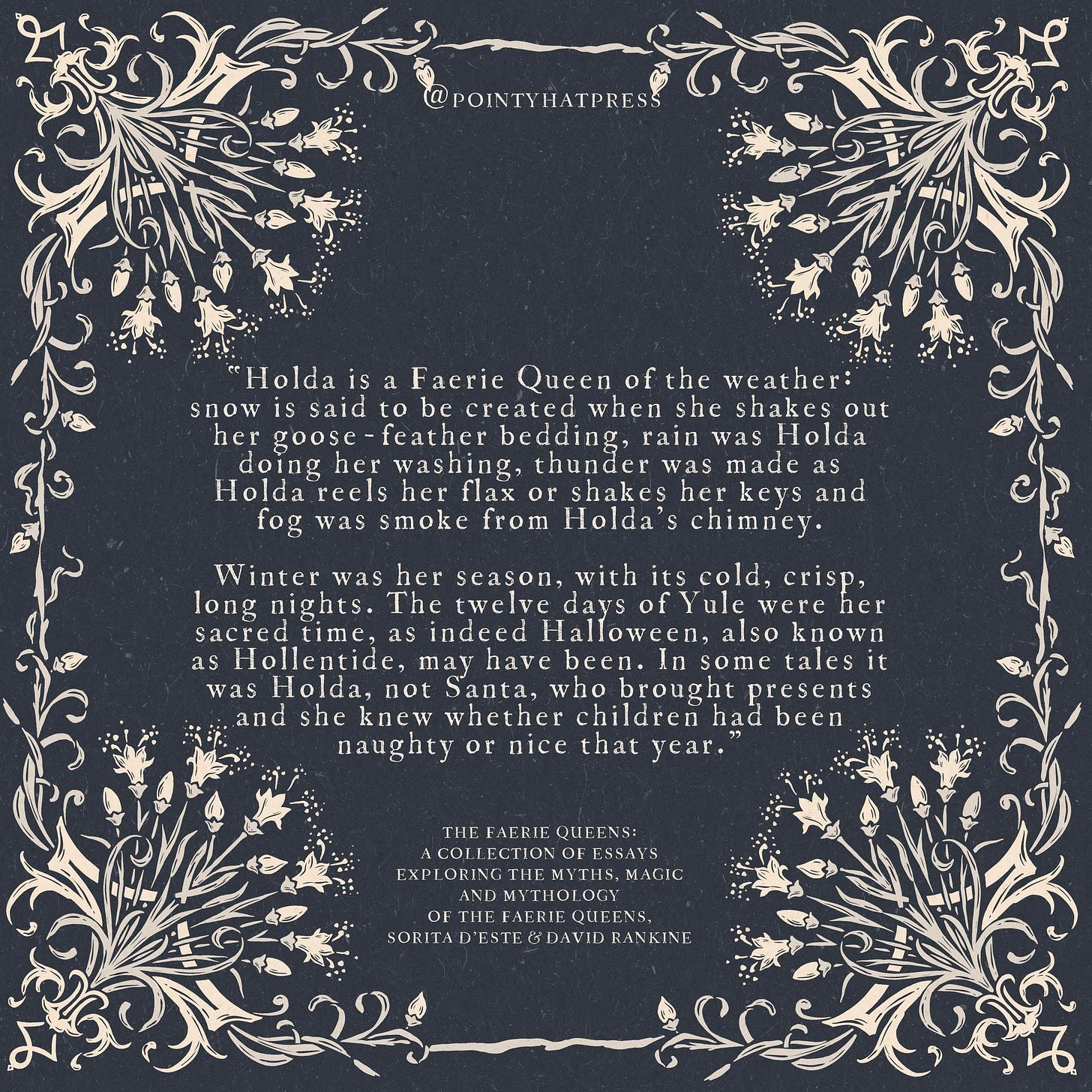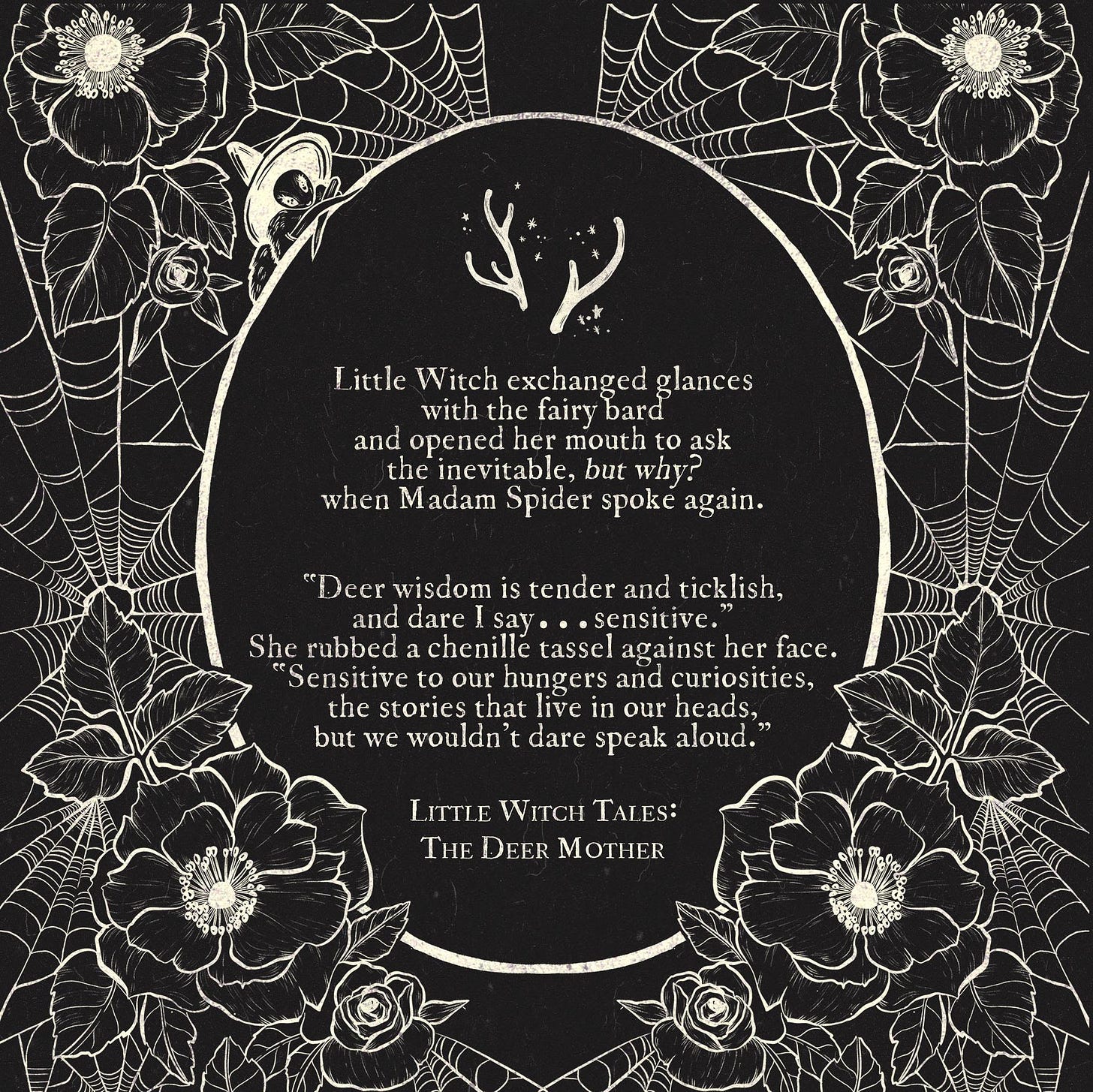Before the tales of Father Frost or old St. Nicolas, it was fairy women and storm hags who heralded the Yuletime season. Back then, a blue-faced, one-eyed crone named the Cailleach was bigger than the trees. She was the Old One, a giantess who raged from mountain to mountain, wielding a hammer in one fist and an icy staff in the other. In her springtime myth with the goddess Brigid (also known as Bride or Brìghde), the Cailleach was dangerous, fierce, and unpredictable, just like winter.
But the Cailleach's domain was not limited to a season, oh no, her riddles haunted realms unseen and unknown. Her name comes from the Latin 'pallium', meaning veil or cloak, therefore, the Cailleach was the Veiled One. In some of her lesser-known myths, the Cailleach was a land tender and guardian of the wildwood. She manifested not as a giantess but as a riddle-speaking witch. She wasn't modest but wore long dresses to disguise her identity. You see, one of her legs was human, but the other was that of a deer or a bird, a reminder that the Cailleach was also part fairy.
The Cailleach is older than time, but she isn't the only voice that beckons from winter folktales. Listen closely and you'll hear Frau Holle listing off her chores. She also goes by Holda or Mother Holly, and her home isn't in the woods but in a magical realm that can only be accessed through the bottom of a holly-covered well. Frau Holle's cottage is cozy, homemade soup simmers on the stove, and she only requires one thing in exchange for a warm bed. Might we tidy up her house? The reward is a handful of gold or a kettle of pitch, so make yourself useful. Legend says that when someone visits Frau Holle, the grandmother shakes out her pillows and blankets and unknowingly creates a blizzard of feathers. Eventually, when the grandmother finishes 'making her bed,' the feathers float down to earth in the form of snowflakes.
Like other storm spirits and fairy women, Frau Holle is a guardian of trees and animals and the one responsible for shaping our changing seasons. She doesn't sport hooves or talons like the Cailleach, but it's still fairly easy to spot Frau Holle. Once your chores are finished, turn your eyes to the sky and look for the old woman riding atop a flying deer (or sometimes a white bird), her magical steed between worlds. In Teutonic Mythology, Joseph Grimm wrote that “Holle-riding, to ride with Holle, is equivalent to a witch’s ride.”
Frau Holle first appeared in the Grimm’s 1812 tale, Old Mother Frost, but she likely evolved from the remnants of an earlier Pagan goddess, or perhaps, a fairy. Grimm referred to her as a queen of the mountain sprites who were sometimes called Huldrefolk or “Hidden People.” Over the years, Frau Holle has been compared with Aphrodite, Frigga, the Elder Mother, various spinning goddesses and snow spirits, leaders of the Wild Hunt, and the elusive, radiant, Fairy Queen herself.
As deer were rumored to be fairy cattle, shepherded by winged sprites and witches, it's no surprise that these creatures show up in the stories of the Cailleach and Frau Holle. Often, their beloved deer are horned, and we assume they're stags, but here's the thing – female reindeer do not shed their antlers during winter. Only male reindeer go without their crowns. So, if we see a horned, hooved creature roaming the pages of a timeworn solstice story, it's likely the Deer Mother.
The Deer Mother's story is one of hope, and depending on the version we read, she carries the light of Saule, Rohanitza, Beivve, or another Sun Goddess in her antlers. We wrote a Little Witch Tale inspired by this myth (read it here) and in January, we'll be sharing an audio version of this story on the Pointy Hat Press podcast!
Merry Midwinter, Literary Coven! Have you spotted any fairy women or storm hags roaming the pages of winter? If so, add their names to our seasonal altar.







